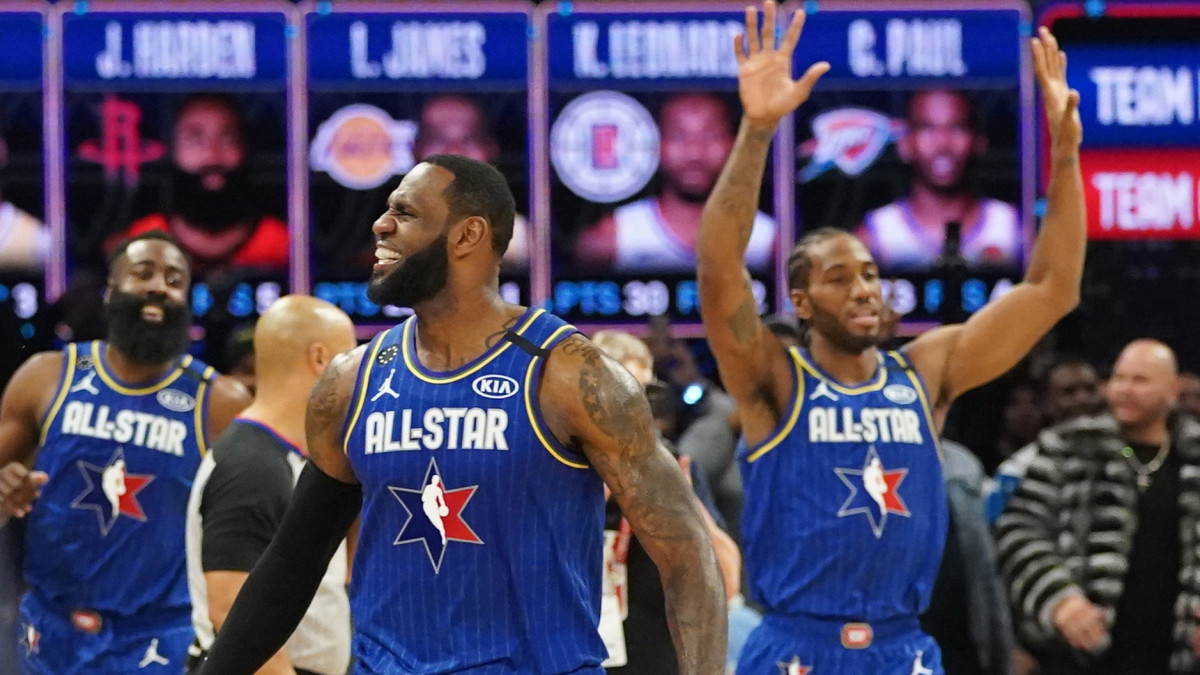Revamped All-Star Game Format Is Big Win For NBA

CHICAGO — In the words of philosopher king Rasheed Wallace, both teams played hard. And so the NBA All-Star game, it appears, was fixed on Sunday night, with the introduction of a fourth-quarter target score—in short, what became a race to 157 points—ending 157-155 in favor of Team LeBron, as Anthony Davis sunk a free throw to ice the game after a hard foul by Kyle Lowry sent him to the line. (Safe to say, it was the only pickup game in the history of this rough-and-tumble basketball city to ever end on a free throw.)
With everyone in entire United Center standing, lenient refs and shockingly physical defense led to a roller-coaster finish that included two successful coach’s challenges, Giannis Antetokounmpo blocking LeBron James twice, a charge by (who else) Lowry, and step-back would-be game winner by (who else) James Harden that was waved off after officials ruled he pushed off on (who else) Lowry. Team LeBron rallied back from a 17-point deficit, and closed with a lineup of Leonard, James, Davis, Harden, and an unsurprisingly hardcore Chris Paul.
"Everybody was like, 'That was pretty damn fun,’” James said. The result mattered far less than the quality of the product, as somewhere along the way, a real game broke out, one even the most cynical of observers could not deny was a galvanizing, competitive display by the world’s best basketball players. Kawhi Leonard won MVP honors (and a trophy named, for the first time, after the late Kobe Bryant) with 30 points, and a win. Per usual, he summed his feelings up post-game with telling brevity. “The new format was good. I felt like it was fun in that fourth quarter.”

As intended, the shift in format truly mattered. It was far less confusing in practice than it’s been to explain in layman’s terms. The three-quarter aggregate was 133-124 in favor of Team Giannis, so the winning score was set at 157 (for the math geniuses out there, 133 plus 24), an endgame system initially incorporated by The Basketball Tournament to better grease the odds of a competitive final quarter. And so they played to 157 with a shot clock, but no game clock. “We wouldn't be All-Stars if we weren't competitors,” James said. “Guys definitely just had that sense of pride.”
Under the new rules, each of the first three quarters was scored as its own game, with the winner of each quarter sending $100,000 to local charities. (In total, Team Lebron sent $400,000, including a victory bonus, to Chicago Scholars, and Team Giannis $100,000 for After School Matters.) And while the scoring tweak initially didn’t birth more than a humdrum first half, the game picked up in earnest after a tight, tone-setting third-quarter finish that included multiple intentional fouls, a late-clock sideline out of bounds play, a clutch three by the always-slovenly Nikola Jokic that jolted the entire building, and eventually, a 41-41 tie.
But all we’ll remember, thankfully, was the final quarter, which needed only a handful of possessions to fully resuscitate an All-Star game that had long lacked for meaningful moments, inspired play, and, against all odds, defensive effort. The fact that veterans Paul and Lowry closed the game for their respective teams over starters Luka Doncic and Trae Young didn’t hurt. “What's always been great to me about the All-Star Game is seeing guys that normally want to kill each other working together and then combining that competitive spirit and strength into one force,” said Frank Vogel, coach of Team LeBron. “I think you saw that with the veteran group we had out there on the floor in the fourth.”
In truth, perhaps all four quarters could have benefitted from incorporating a target score, and perhaps that’s something worth considering moving forward. But the buildup and eventual payoff was immense—the simplicity of watching the best players throw their bodies around in one big game, stakes be damned. There was actual tension. Real basketball is fun. And competition for competition’s sake, whatever it takes, is plenty.
